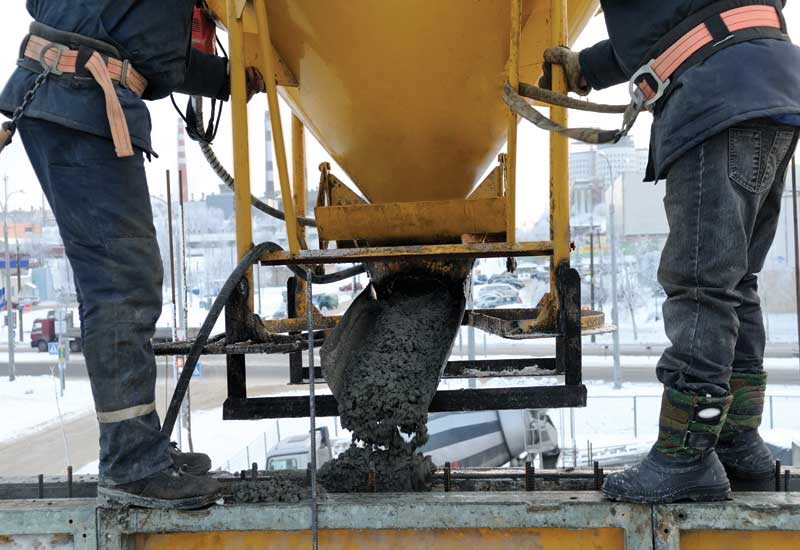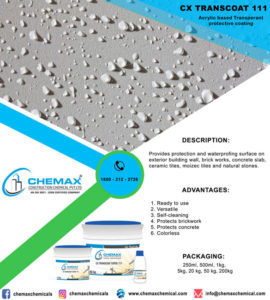We are manufacturing all types of Construction chemicals !!
The Indian market for construction chemicals is substantial and expanding quickly. There is a rising demand for new homes, workplaces, and infrastructure projects as the Indian economy keeps booming and more and more people move into cities. As builders and contractors look for ways to boost the caliber and effectiveness of their projects, the demand for construction has increased, which has resulted in a commensurate increase in the market for construction chemicals. Millions of dollars are currently spent on construction chemicals in India, and this trend is anticipated to continue. In this blog post, we’ll look more closely at some of the various kinds of building chemicals that are frequently utilized, as well as their main traits and applications.
First We Know …..
- WATERPROOFING AGENTS:
Waterproofing Chemicals are one of the most significant subcategories of building chemicals. These are employed to stop water from entering a building or other structure. These substances are applied to surfaces made of metal, concrete, or brick to form a barrier that keeps water from penetrating. Roofing materials, basements, and other areas where water infiltration could cause damage are frequently treated with waterproofing chemicals. Bituminous waterproofing, polymer-based waterproofing, crystalline waterproofing, and cement-based waterproofing are some of the most popular forms of waterproofing agents used in construction.
- ADHESIVES ( Tile Adhesive Manufacturer India):
Adhesives are chemicals that are used to firmly and permanently join two different types of materials. Adhesives are employed in many different building projects, from attaching tiles to walls and floors to stabilising metal or wood trusses. Epoxy adhesives, polyurethane adhesives, and acrylic adhesives are a few of the most popular types of adhesives used in construction.
- CONCRETE ADMIXTURES:
Concrete admixtures are substances that are added to concrete mixtures to enhance certain characteristics. These admixtures are used to alter the workability, setting time, strength, and durability of freshly placed concrete. As they enable concrete to be used in a wider variety of applications and offer a number of benefits that enhance the quality and efficiency of construction projects, concrete admixtures are a crucial component of modern construction.
Concrete admixtures come in a variety of forms and are frequently utilised in construction. Water-reducing admixtures, which are used to lower the amount of water required to generate a specific volume of concrete, are one of the most significant varieties. These admixtures make concrete stronger and more durable while also making it simpler to deal with by reducing the quantity of water in the mix.
Another frequently used form of concrete admixture is superplasticizers. These additives increase the concrete’s flowability and plasticity, making it simpler to install and finish. Superplasticizers decrease the quantity of water required to manufacture a specific volume of concrete while also enhancing its strength and durability.
Several more kinds of concrete admixtures are also utilised in particular applications. For instance, accelerating admixtures can hasten concrete’s setting time while retarding admixtures might delay it. When the placement and completion of the concrete are time-sensitive requirements, these admixtures can be helpful.
- CONCRETE CURING COMPOUNDS MANUFACTURER:
In order to increase the strength and durability of freshly poured concrete, a chemical solution known as a concrete curing agent is added to the surface. After the concrete has been put and completed, these substances are applied to assist keep it from drying up too rapidly. The growth of the concrete’s strength and endurance depends on the cement’s ability to hydrate, which is encouraged by curing agents by maintaining the concrete moist and at a constant temperature.
There are many various kinds of curing chemicals available, and each one has special qualities and applications. For instance, some curing substances are made to be applied to outdoor surfaces where they offer defense against the sun’s rays and deterioration. Some are made to be applied to interior surfaces, where they offer defense against dust and stains. Others are created for use on niche projects, including precast concrete or bridge decking.
- SEALANTS:
Sealants are a significant subcategory of building chemicals. These are materials that are used to close cracks and block the passage of other materials, such as water or air. Sealants are frequently used to seal cracks and seams in building materials like metal, concrete, and brick. Additionally, they are utilized to seal windows and doors, stop draughts, and boost energy efficiency. Silicone, polyurethane, and acrylic sealants are some of the most popular types of sealants used in construction.
- GROUTS & ANCHORS:
Products like grout and anchors are utilised in the building sector to increase the functionality and stability of building components. The gaps and crevices between tiles, bricks, and other building elements are filled using grout, a type of construction material. They serve as a solid, long-lasting glue between the components and are normally comprised of a cement, sand, and water mixture. On the other hand, anchors are tools used to fasten building materials to different surfaces or buildings. They are frequently employed to fasten walls, columns, and other construction components to the floor or to other areas of the structure. Steel, concrete, and plastic are just a few of the materials that can be used to create anchors.
- MOULD RELEASE AGENTS:
Chemicals are applied to surfaces as mould releasing agents or mould release compounds to keep objects from adhering to them. These substances are frequently applied to the surfaces of moulds, dies, or other forms in the industrial sector to prevent the adhesion of substances like plastic, rubber, or concrete. As a result, the materials can be quickly and easily removed from the mould without endangering it or the final product. Mould releasing agents come in a variety of forms, each of which is intended for use with particular materials and applications. As an illustration, whereas certain mould releasing agents are made specifically for use with plastics, others are made for use with rubber or concrete.
Conclusion: Building chemicals play a crucial role in the building sector and offer contractors and builders a variety of advantages. Builders and contractors may ensure that their structures are sturdy, stable, and able to resist the rigours of daily use by utilizing these chemicals to increase the performance and longevity of building materials.





